When Oskar Barnack completed the first Leica prototype in the mid 1920s, his goal was to make a high quality compact camera that could make high quality images using double perforated 35mm film. At the time, the idea of a mass produced 35mm camera was one that nobody was thinking of as most photographers considered the exposed image area of 35mm to be too small for still photography. Previous examples of 35mm cameras were all of the hobbyist or prototype variety, coming in strange shapes and sizes, with little regard to ergonomics or how difficult it would be to load.
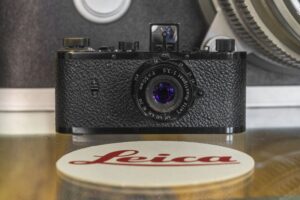
In an effort to make a simple and easy to produce camera, Barnack’s new design would have have a solid metal body with curved edges, no hinges, and a plate on the bottom for loading film. It was simple to design and build, and most importantly, it prevented light from leaking into the film compartment. Beyond that, Barnack wasn’t concerned with how difficult or easy the camera was to load.
In the years that would follow, that original Leica design would become the most copied camera design ever made. Cameras from countries all over the world including Japan, the United States, England, the Soviet Union, and many others would appear, some of which looked nearly identical, but others simply shared a similar design. Of the Leica copies, many were bottom loaders. It wasn’t the most convenient, but it worked.
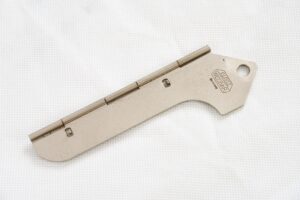
Since then, camera designers have moved on from loading film through the bottom of the camera and embraced loading film through a door in the back, but if you want to shoot a classic Leica or similar camera, you need to familiarize yourself with the process. A huge number of tutorial articles and videos can be found on the Internet showing you the right way to do it. Most instructions follow the same basic step of having to extend the narrow leader on a fresh roll of 35mm to somewhere around 10cm long. Accessories like the Leica ABLON and newer 3D printed options from companies like Photonbox give you a guide for cutting the 35mm film leader to the exact shape and size you need. You can do it without a guide and simply do it by eye, but some people feel less comfortable doing that.
After cutting the leader to the right length, you need to remove the take up spool, and attach the leader securely to the spool in the correct orientation and then simultaneously insert both the 35mm cassette and take up spool into both sides of the camera at the exact same time, being careful not to let the leader slip off the spool, while navigating the film around the sprockets and through the correct film path. It is certainly not difficult to do, but it is tedious, and for some it is a deal breaker for using these cameras. Many people have attempted hacks or alternative methods for loading these cameras, but a company in Germany called Ausgeknipst came up with a new solution.
Ausgeknipst is a small shop in Würzburg, Germany run by two guys named Vlad and Antonio who design, print, and sell a number of accessories for camera owners. On the company’s eBay store, accessories like lens caps, battery adapters, film guides, flash sync port plugs, and even a clever rewind knob for the Leica M3 can be purchased.
Of these products, the Ausgeknipst Quick Load Spool caught the eye of my friend and professional Leica shooter, Johnny Martyr. Earlier this year, Johnny ordered a couple of these spools to try them on his cameras and ended up loving them so much, he sent me a couple to try. He said that he found these to be the best option for easily loading film into his bottom loading Leicas and wanted to get feedback from someone else before he went public with his adoration for the product.
Ausgeknipst makes a couple different variations of their Quick Load spools, the versions Johnny sent to test were specifically for the Leica I through IIIf models. Starting with the Leica IIIg, Leitz started to make changes to the inner shaft that the spool wraps around, so to accommodate, Ausgeknipst makes a different spool for the Leica IIIg which also works in the M1, M2, and M3. If you are into Soviet bottom loaders, there is a third type specifically for bottom loading FED and Zorkis. Regardless of which version you get, the spools work the same way, they just accommodate minor changes to the inside of the camera.
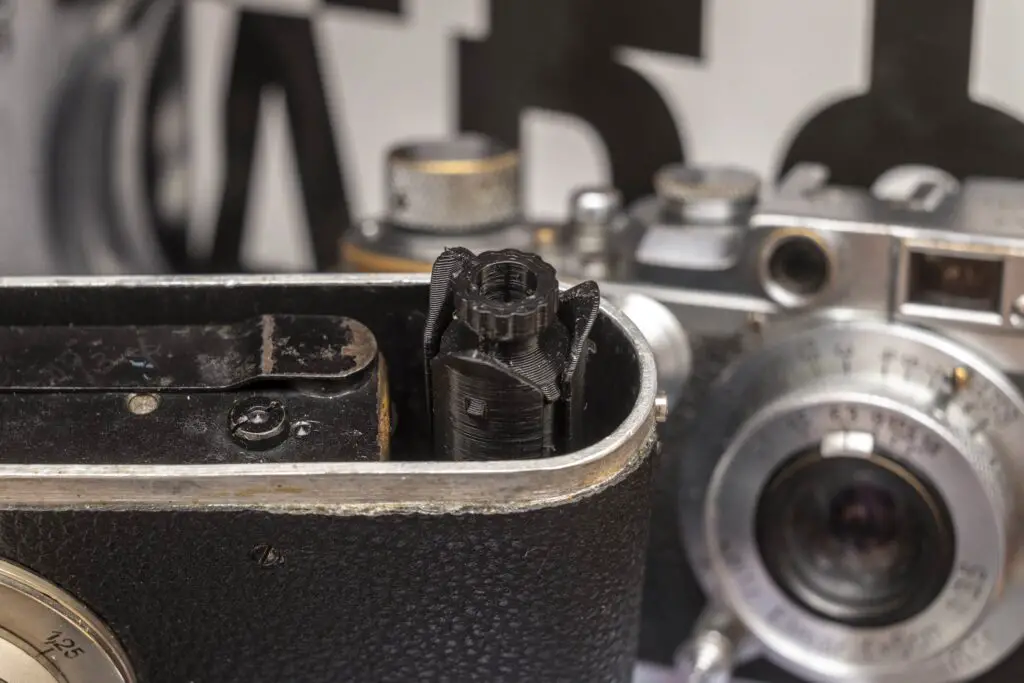 Upon learning of the three different types of spools, the first thing I did when I received the Leica I-IIIf spools was try them in a Leica IIIg, Leica M3, and a bunch of other cameras, and I can confirm that they definitely won’t work on every bottom loading camera. For the Soviet cameras, I found that the spools would work if you forced them in, but they’d be so tight, you’d likely never get it out again. As a plus, I found that the Leica I-IIIf spools also worked on the Leotax K and Leotax IV B, Shanghai 58-II, and Premier Instrument Kardon. They did not work on any Canon or Nicca rangefinder I tried, as the shaft is totally different. As of this writing, Ausgeknipst does not make one that will work in bottom loading Canon or Nicca rangefinders, but perhaps they might if there is enough demand.
Upon learning of the three different types of spools, the first thing I did when I received the Leica I-IIIf spools was try them in a Leica IIIg, Leica M3, and a bunch of other cameras, and I can confirm that they definitely won’t work on every bottom loading camera. For the Soviet cameras, I found that the spools would work if you forced them in, but they’d be so tight, you’d likely never get it out again. As a plus, I found that the Leica I-IIIf spools also worked on the Leotax K and Leotax IV B, Shanghai 58-II, and Premier Instrument Kardon. They did not work on any Canon or Nicca rangefinder I tried, as the shaft is totally different. As of this writing, Ausgeknipst does not make one that will work in bottom loading Canon or Nicca rangefinders, but perhaps they might if there is enough demand.
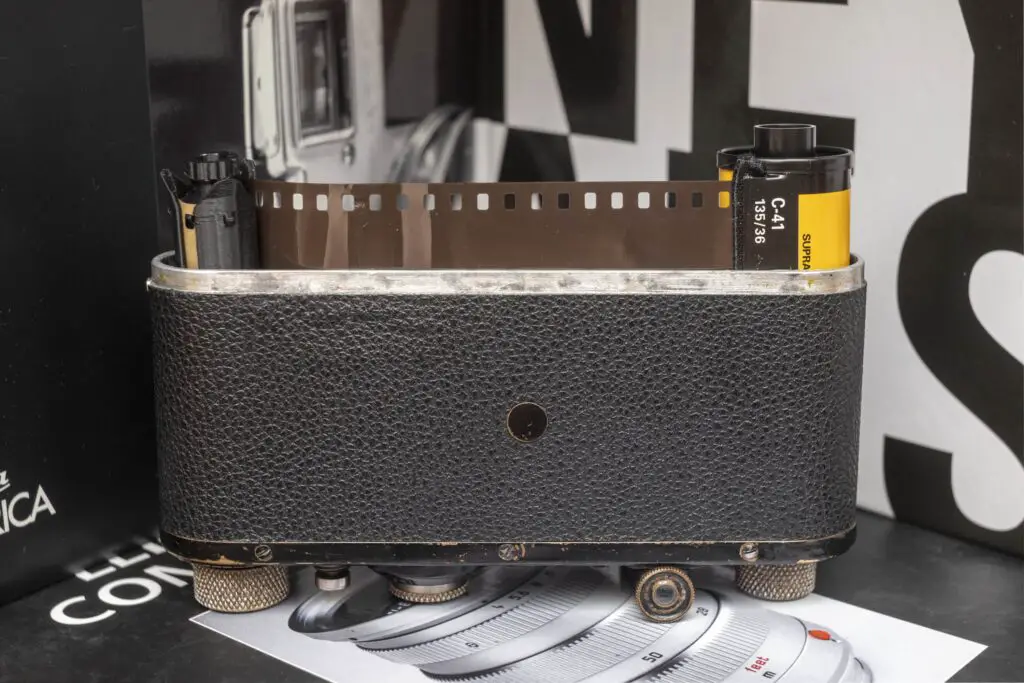 What makes the Ausgeknipst spools different from the original and other aftermarket spools is a unique “tulip” design in which one side of the spool has three flared “petals” each with a sprocket tooth for gripping the film, surrounded by an inner shaft with a second set of sprocket teeth. This inner and outer design is what makes the spool so unique because it can grip the film in such a way that it will positively load in the camera without having to trim the leader while also not allowing the film to easily slip off while loading. Yet, when you finish a roll of film and are rewinding it, it can easily be pulled out of the spool without it getting stuck. The best part of it all, is that you can load the film onto the spool without ever removing it from the camera.
What makes the Ausgeknipst spools different from the original and other aftermarket spools is a unique “tulip” design in which one side of the spool has three flared “petals” each with a sprocket tooth for gripping the film, surrounded by an inner shaft with a second set of sprocket teeth. This inner and outer design is what makes the spool so unique because it can grip the film in such a way that it will positively load in the camera without having to trim the leader while also not allowing the film to easily slip off while loading. Yet, when you finish a roll of film and are rewinding it, it can easily be pulled out of the spool without it getting stuck. The best part of it all, is that you can load the film onto the spool without ever removing it from the camera.
I could sit here and type up 1000 words explaining how it looks and how to attach the film leader to the spool, or I could just show you a video of how it is done. Attaching film to the spool can be done both with it in and out of the camera, however the first couple of times you do it, you may want to experiment doing it with the spool out of the camera to get an idea of what’s happening. The video below shows loading film both ways.
Note: I do fumble about a bit while attaching the film to the spool in the camera. Watching myself doing it through the screen on my smartphone makes it much more difficult to do than it really is. I promise that in person, this can be done more easily!
Overall, the process of attaching the film to the Ausgeknipst spools takes a little practice, but like everything, it gets easier the more you do it. Before writing this article, I shot several rolls of film using these spools in a Leica I Model C and the Leica IIIa you see in the video, and I had no issues with the film tearing or getting jammed in the camera. In every instance, the film automatically detached from the spool while rewinding. Even if it remained attached, you’d just need to lift if off the spool like I show in the video.
It is easy to see the advantages to this spool, but there are two cons. The first and most obvious is that this is a homemade 3D printed spool. For as great as 3D printing technology has become, it still isn’t perfect. Rough edges and visible filament lines are to be expected. Many Leica shooters consider their cameras to be luxury items and may not feel comfortable putting a 3D printed spool in their camera. This is something that Johnny Martyr addresses in his original review as well. He says that earlier versions of these spools were of lower quality and could break. I feel as though the two I have to be very sturdy and should hold up well to repeated use, as long as they are used properly. Still, if there was a way to make these same spools using a more proven injection molded plastic or metal, they would likely be more appealing.
The second con is that these fit snugly into the camera and are not easy to remove. The inner post does have a textured grip, but it is not enough to pull them out with just my fingers. Once the spool is in the camera, the best way I’ve found to remove them is by carefully using needle nose pliers. I personally don’t believe this to be as big of an issue as it likely seems, as the greatest benefit to these spools is obtained by leaving them in the camera. These spools are intended to make loading your Leicas easier without having to keep removing the spool, so if you have a favorite Lecia that you wish to use often, simply leave the spool in the camera and removing it is no longer a challenge. If you have multiple Leicas you wish to use these on, just buy more than one.
While the Ausgeknipst Quick Load spools are not perfect, in my mind, they are the rare example of an aftermarket accessory that makes a meaningful improvement to the usage of a vintage camera. I have never found bottom loading cameras to be that big of a challenge, but I acknowledge that the extra steps can slow you down. If you shoot a lot of film in your Leicas and regularly have to load them in the field, having to keep trimming the leaders could become a nuisance, but with one of these spools in the camera and a bit of practice, loading them can be done with far less hassle. I definitely recommend getting one of these spools from Ausgeknipst’s German eBay store. Although their eBay store is on the German version of eBay, English speaking customers can order from them as they do ship to the United States. As of this writing, they offer volume discounts so if you buy more than one, you save money.
Click on each of the three images below to be taken to current eBay pages for the Leica I – IIIf, Leica IIIg and M-series, and FED and Zorki spools. They also make regular spools for Ihagee Exakta and Exa cameras, Contax and Kiev rangefinders, and a few other cameras.
Overall, I am extremely happy with the Ausgeknipst Quick Load spools and want to thank Johnny Martyr for turning me onto them. Shortly after recording the video showing how to load film onto the spools, I loaded up another camera with a fresh roll of film and have already been enjoying using them again. If anyone reading this decides to give one a try, please let me know in the Comments section below what your thoughts are on them.

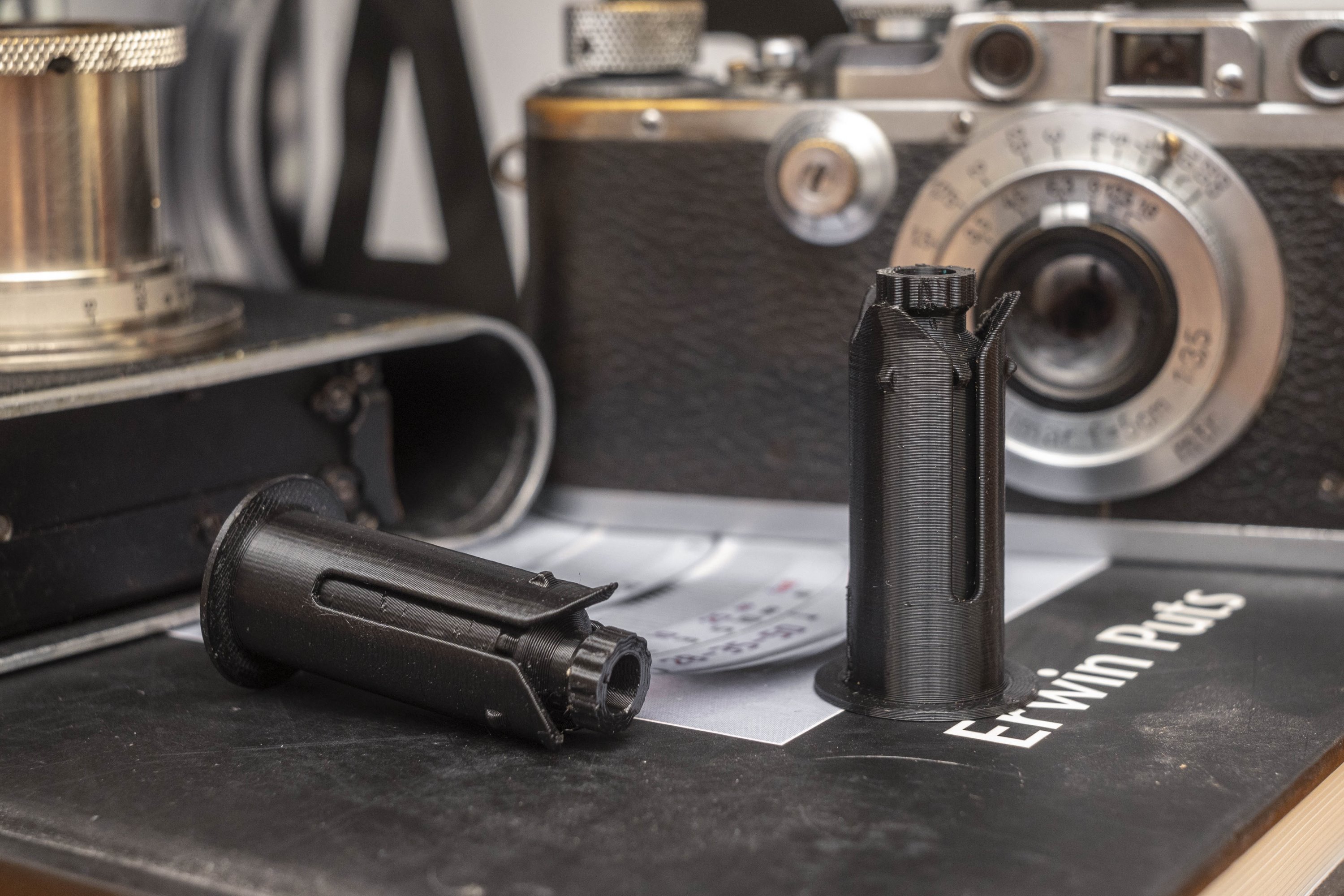
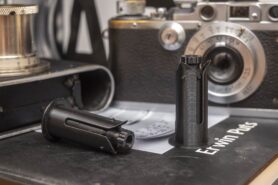
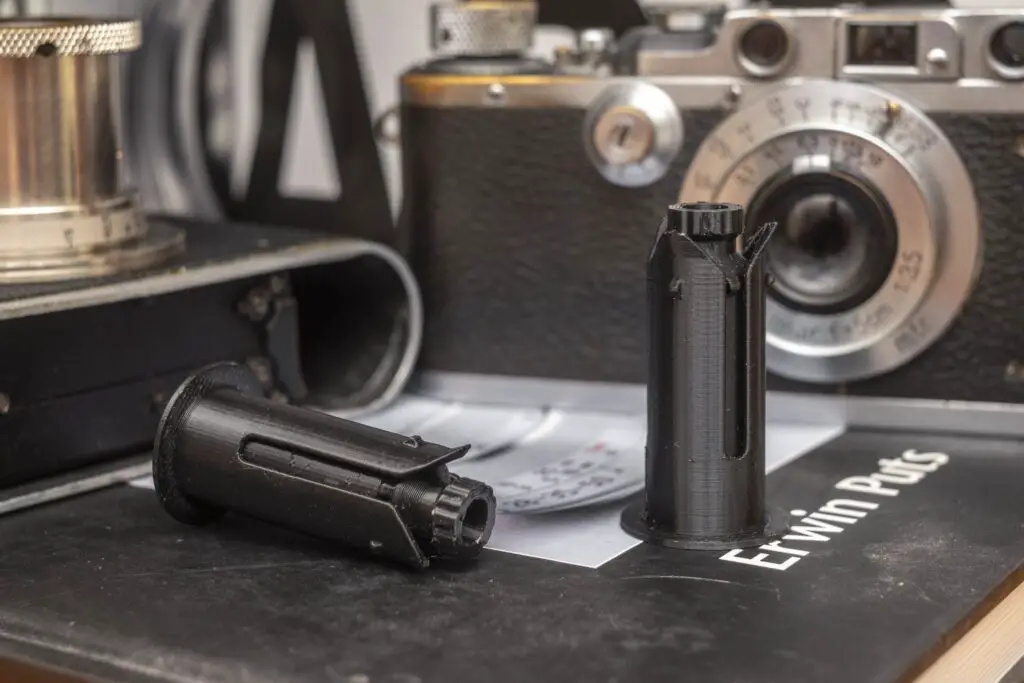
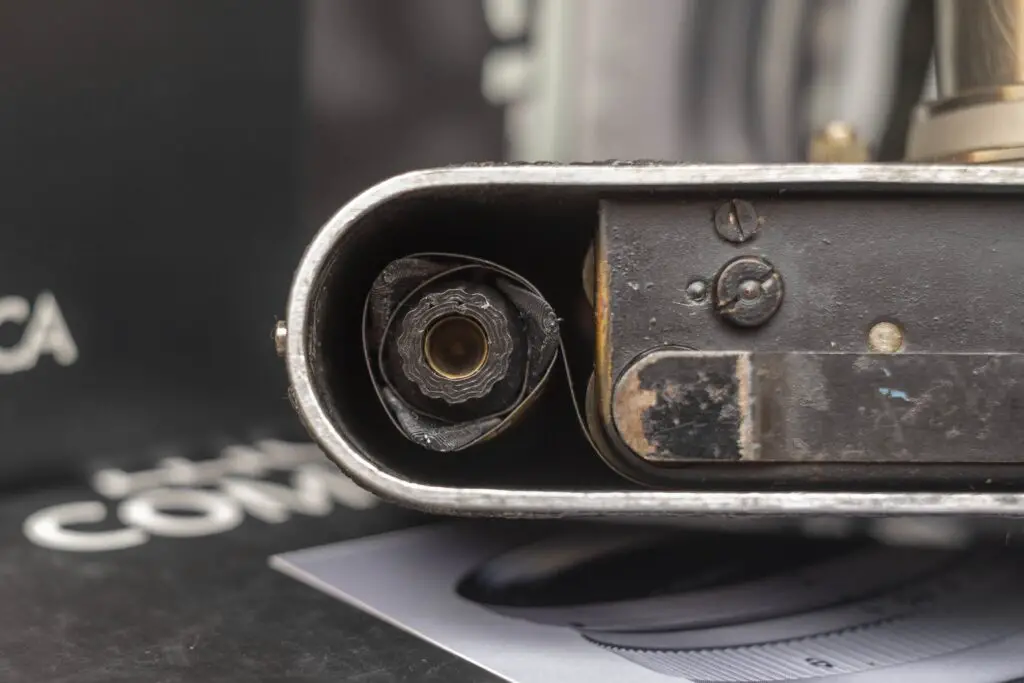
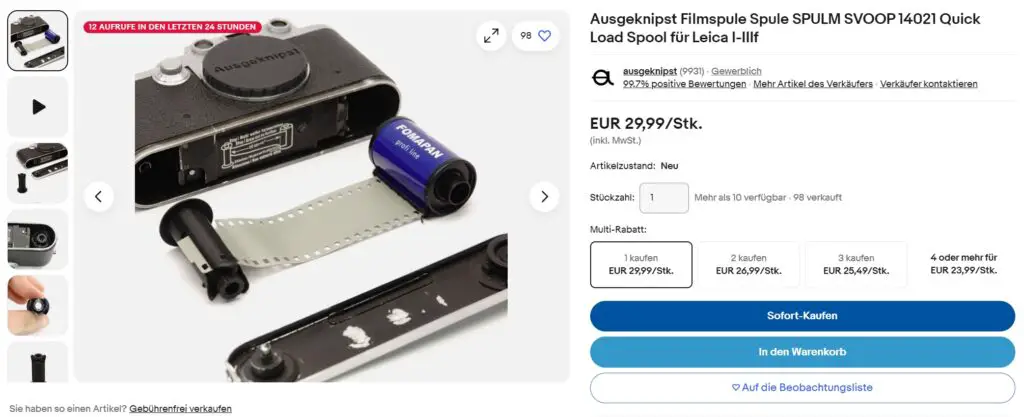
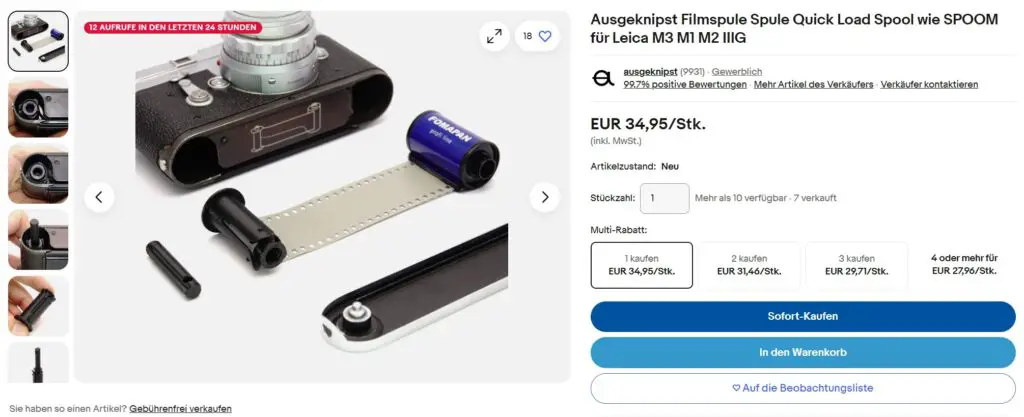
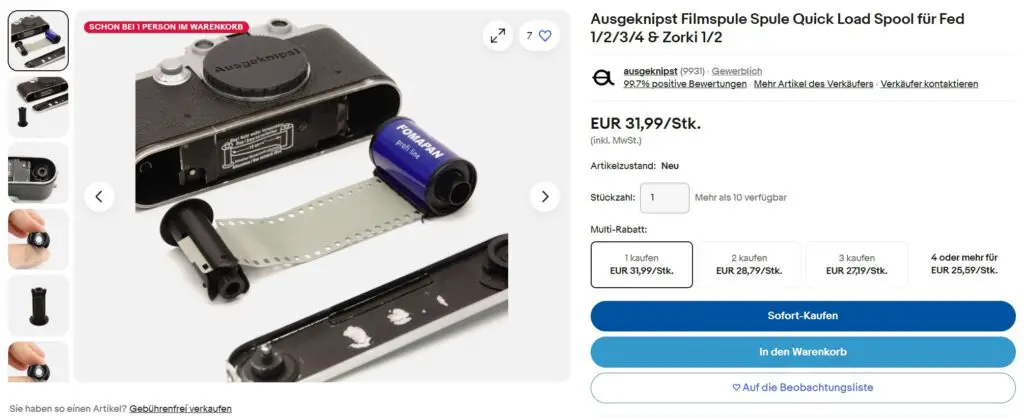
I’m really pleased you have continued to enjoy the spools, Mike! Your description of how they grip the film and why they are so great is far more eloquent than mine too. Ausgeknipst recently sent me the M spool and they have cleverly incorporated a second part; a small threaded pipe with a lanyard hole that can be screwed into the spool to very easily remove it from a camera. I’m not sure if Ausgeknipst have produced I-IIIf spools with this feature yet but it’s another simple/clever solution to a problem that many original spools also have.
I am glad you liked the review. Thank you for turning me onto these. While I never really found it that big of a deal to load my Leicas the “normal” way, using these spools is even nicer and I definitely intend to keep using them. Maybe I need to get one for my M3!
I just received mine for the Leica iiif. It has the screw-in “pipe” you mentioned. Looking forward to using it.
Dear Mike,
thanks a lot for the extensive review! Just wanted to add my 3 cents:
Since a month we also run our own Webshop that offers English Translations & most accurate descriptions and an up-to-date catalogue of our items: https://ausgeknipst.de/search?q=leica
There, we also offer a Leica Ablon Film leader cutter similar to the one offered by Photonbox in the US (while film loading with our fast loading design does not necessary require leader cutting, I still recommend it, as I do not want to be responsible for any damaged shutters):
https://ausgeknipst.de/search?q=ablon
While the first spools we sold were a little brittle, we made several slight changes over the months (based on customer feedback) and made them much sturdier. Since then we had not single complaint with broken parts.
Since a week or so every Leica LTM spool is being shipped together with a little tool that helps with spool removal (like the one you saw with the M spool)
Greetings Vlad
I guess something changed when Nicca changed to the Leica IIIC/IIIG and lever wind models. On the Nicca Type 33, it doesn’t work, but the Nicca Type IIIS it does work.